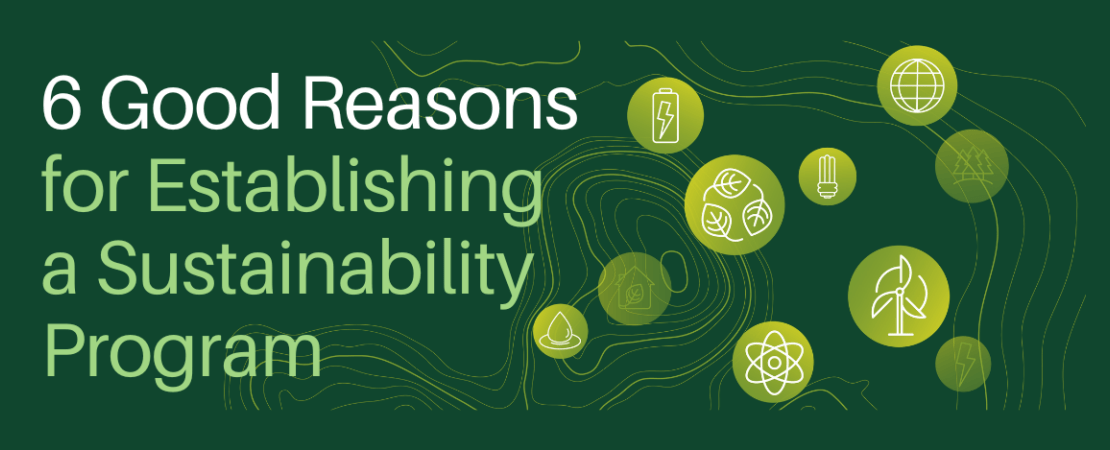Elevate your Environmental Impact: 5 Steps for Creating a Successful Sustainability ProgramIn a world where environmental concerns are at the forefront of global discourse, creating sustainable practices isn’t just a choice; it’s a necessity.

In a world where environmental concerns are at the forefront of global discourse, creating sustainable practices isn’t just a choice; it’s a necessity. As individuals, communities, and businesses, we have a responsibility to preserve our planet for future generations.
For businesses, one powerful way to do this is by establishing a robust sustainability program. But where do you start, and what does it entail?
🌳 Understanding the Scope
Before diving into the creation of a sustainability program, it’s crucial to define a clear scope. For that, consider key environmental, social, and economic aspects for your business.
If you have conducted a materiality assessment, use its conclusions to pick your most significant impact areas. Examples include carbon emissions’ reduction, minimizing waste, making your product and packaging more sustainable.
By understanding priorities, you can design a program that address pressing issues relevant to your business.
🌳Benefits of Program vs. Project
Projects address specific sustainability initiatives and are bound in specific time frame.
A program provides a framework for inter-related projects, facilitates sharing of expertise and resources, as well as ensures continuity of efforts within the selected scope.
A Sustainability Program is not just about implementing isolated solutions but about fostering a culture of sustainability which fuels your organization’s commitment to action. This not only brings environmental benefits but also enhances your brand reputation, attracts stakeholders, and fosters innovation. 🍀🧑🤝🧑💡
🌳 5 Steps for Creating a Successful Sustainability Program
Step 1: Engage Stakeholders from the Very Beginning
- Engage with all relevant internal and external audiences: ensure you involve all relevant stakeholders, both within and outside your organization.
- Include employees across different levels and functions, customers, and suppliers: these groups are essential minimums to engage with.
- Communicate purpose and seek collaboration in the next steps: clearly express your purpose and actively encourage collaboration and participation in the upcoming stages. 🤝
Step 2: Establish a Baseline
- Quantify current impact: measure your current impact within the selected priority area.
- Assess your current practices: identify areas for improvement by evaluating your existing practices.
- Understand market trends and regulatory frameworks: stay informed about existing and upcoming trends and regulations.
- Screen Your competition and engage with customers: analyze your competitors and actively communicate with your customers. 🌟
Step 3: Set Goals and Formulate a Plan
- Define your North Star or Pledge: establish a guiding principle or vision that inspires your actions.
- Collaboratively set clear, measurable goals: ensure that these goals align with your organization’s mission, values, and strategies.
- Develop roadmaps and organize initiatives: create cohesive projects distributed over time (expected program duration) to achieve your objectives. 🚀
Step 4: Implement and Monitor
- Develop a detailed action plan: create a comprehensive action plan that outlines specific initiatives, timelines, responsibilities, and metrics to track progress toward your goals.
- Appoint project teams and leaders: assign dedicated teams and leaders to execute the initiatives effectively.
- Formally kick off with clear communication: initiate the program formally by communicating transparently with all relevant stakeholders.
- Continuous monitoring: regularly monitor project progress using key performance indicators (KPIs) and align the reporting format with your organization’s practices.🔍
Step 5: Communicate and Educate
- Utilize factual information in your communication: make sure to use accurate data from your initial analysis and ongoing progress tracking to support your messages effectively.
- Be transparent: share your achievements and the benefits you’ve realized openly. It’s important to acknowledge that there’s still work ahead while celebrating progress.
- Avoid greenwashing: check that your environmental claims align with the relevant guidelines and standards in your region to maintain credibility and compliance.
- Empower your teams to convey the message: provide them with a suitable toolbox of trainings and resources so they are equipped to effectively communicate with stakeholders, both internally and externally.
- Substantiate your claims: document the facts behind your statements consistently and establish clear responsibilities for data, calculations, certifications, and material specifications. Implement a process to ensure the accuracy and validity of your messages over time. ✍️
🌳Where to Start?
Setting up a sustainability program might seem complicated for some organizations or management teams. However, with the right approach, you can pave the way for a successful undertaking.
Consider the following tips:
- Define a Small-Scale Pilot Project: Begin with a manageable pilot project to build momentum. Identify enthusiastic parts of the organization that are open to sustainability initiatives and willing to lead the way.
- Find a Sponsor from Management: Having a sponsor ensures visibility among decision-makers and credibility within the organization. Seek support from someone who can champion your cause.
- Set Clear Scope, Goals, and Metrics: Define the program’s scope, specific goals, and measurable metrics. Demonstrating results using facts will enhance your credibility and show that you are in control. This facilitates the organization’s willingness to support bigger projects and the entire program.
- Maintain Communication: Regularly communicate progress. Engage with your sponsor, project team, and other stakeholders. Seize every opportunity to promote the pilot project’s achievements.
- Be Prepared to Discuss Impact: Be ready to discuss the results and impact of your pilot project at any time. Leadership buy-in and sponsorship are crucial for long-term success.
Remember, starting small and building incrementally can lead to significant positive change.🌱
Contact us to discuss how we can assist you build your successful sustainability program.
Download the post with extra tips on the link below.
how can we help you?
Contact us at the Consulting WP office nearest to you or submit a business inquiry online.
TAKE THE FIRST STEP TOWARDS
SUSTAINABILITY
Let’s Build a Greener Future Together! Partner with us to align your business with customer expectations, regulatory requirements, and impactful sustainability practices.
